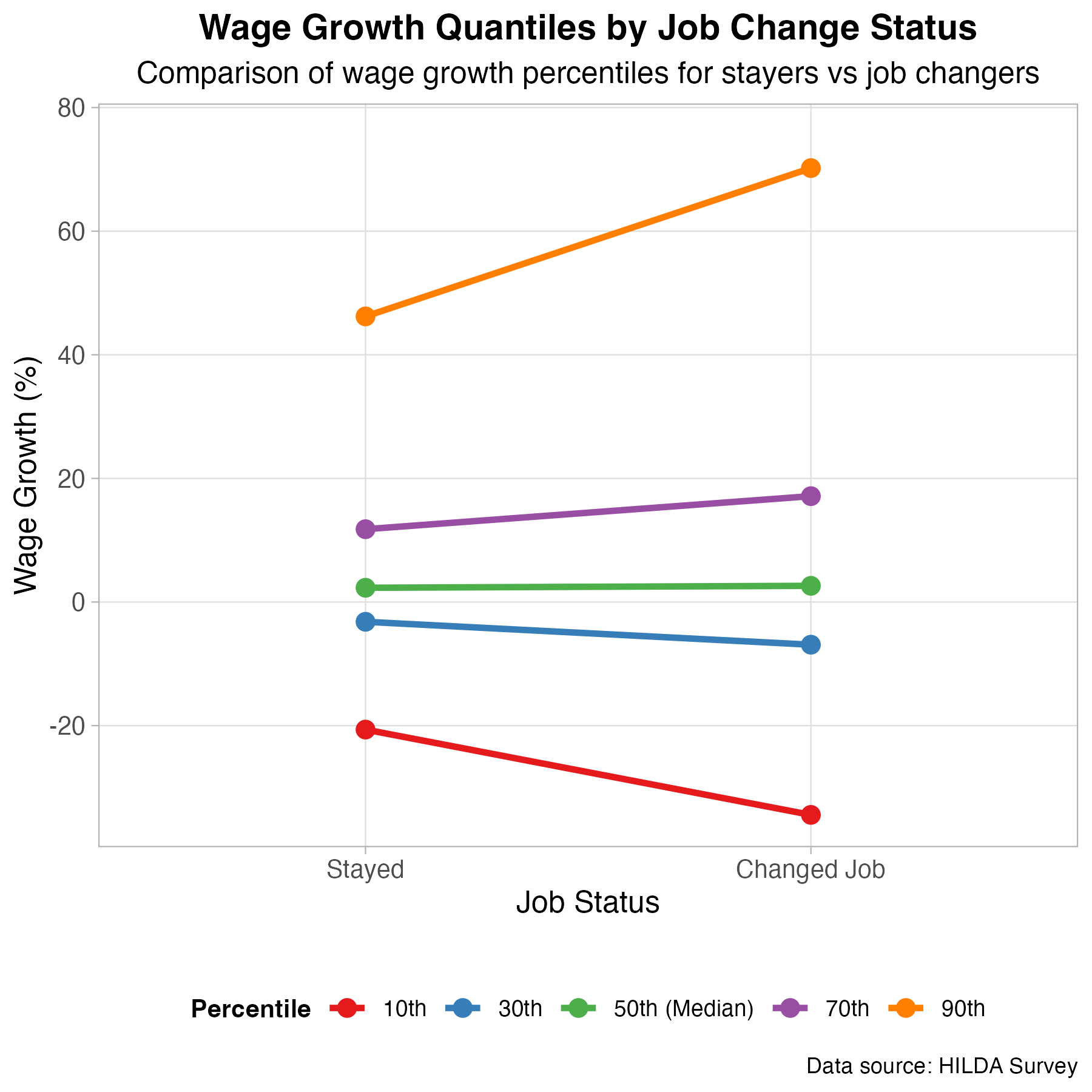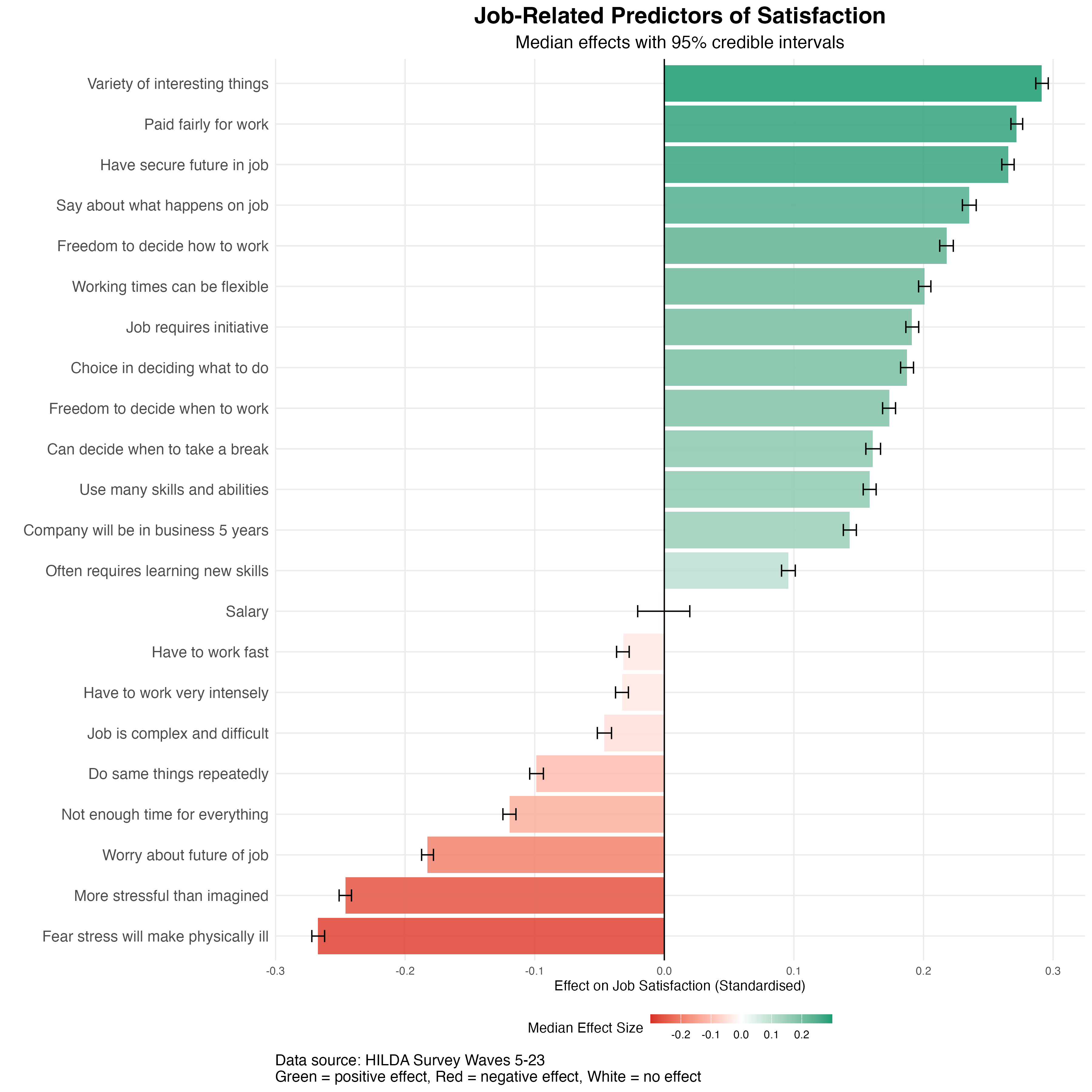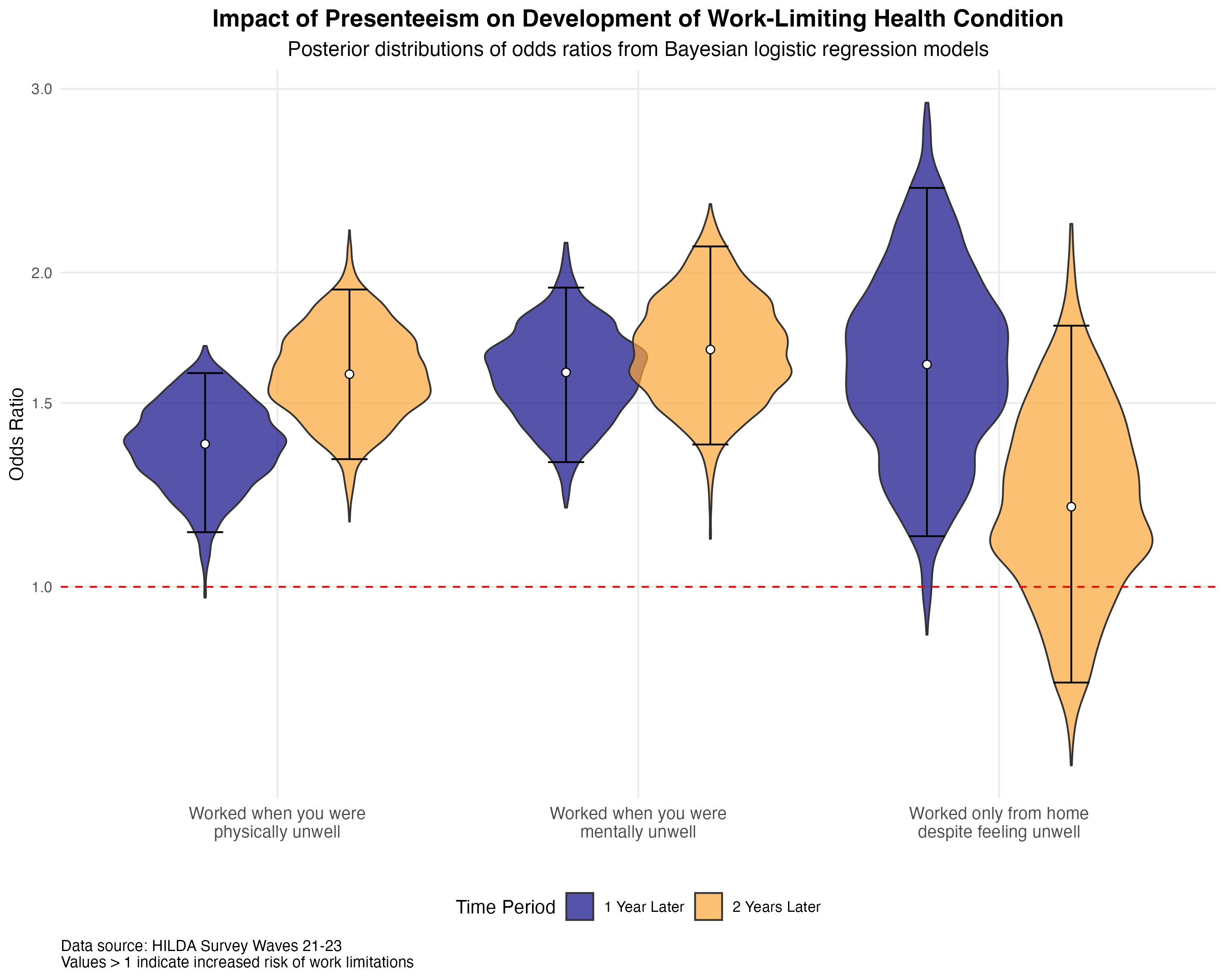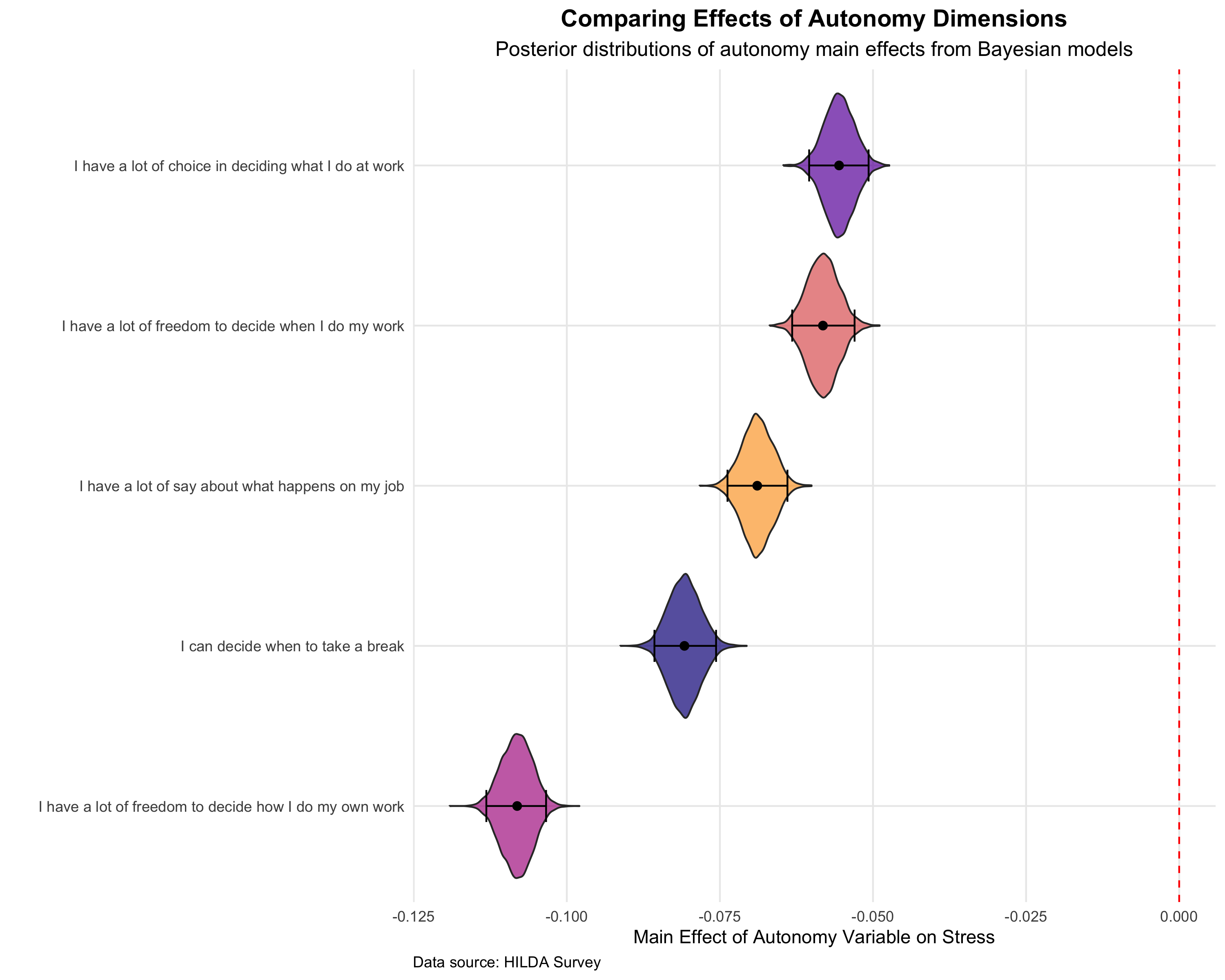The Job-Hopping Gamble: Is Switching Jobs Always the Fast Track to Higher Pay?
Should you stay or should you go? When it comes to career progression, this is a question employees constantly face. Conventional wisdom says that hopping to a new job often comes with a big pay rise, but is that always true? In this post, we examine data from the Household, Income, and Labour Dynamics in Australia survey (a long-term study of life in Australia) to see how job switching really impacts wage growth. The findings might surprise you: on the whole, people who changed jobs didn’t see dramatically different pay growth than those who stayed – median gains were nearly the same – but the range of outcomes for job switchers was far wider. This matters for both employees planning their next career move and HR leaders working to retain talent.
What the Data Show: Switching Jobs vs. Staying Put
To compare career trajectories, we analysed year-to-year employment and wage changes since 2001 for 16,175 full-time workers living in Australia, distinguishing between those who were still in the same job the following year and those who switched employers. The graph below shows how annual wage growth varied between job-stayers and job-switchers.

The lines in this chart show wage growth distributions for employees who stayed in their jobs versus those who switched, indicating the 10th, 30th, 50th (median), 70th, and 90th percentiles of annual real wage growth. What immediately stands out is that while the median outcomes (green line) are similar for both groups, job-switchers experienced much more variable outcomes.
Our analysis revealed two key patterns. First, the headline result might surprise you: the median annual wage growth for job-changers was essentially on par with that of job-stayers. In other words, the “typical” worker saw similar pay increases whether they jumped ship or not. Recent labour market data backs this up – one U.S. report found job switchers saw about a 4.8% pay increase, versus 4.6% for those who stayed.
Second, and more intriguingly, job hopping led to much more variable outcomes. For people who stayed in their roles, most annual wage changes clustered in a narrower band – moderate rises or small drops. But for those who changed jobs, the potential outcomes were far more extreme. A lucky few scored massive pay increases (the 90th percentile of switchers saw ~80% wage growth, well above any stayer’s experience), whereas others ended up earning considerably less (the 10th percentile saw around a 25–30% decline, worse than the lowest stayers). This means that while job switching can lead to big financial rewards, there may be other reasons why people change jobs.
This variability in outcomes reflects the diverse motivations behind job changes. Some employees achieve huge salary jumps, far above what any internal promotion might offer – others willingly take pay cuts for better situations. In fact, surveys show about one-third of pandemic-era job switchers accepted lower pay in exchange for improved work-life balance. On the other hand, many serial job-hoppers do report outsized gains; one survey found frequent movers averaged a 35% salary increase over three years, nearly double the growth of more “loyal” employees. Clearly, motivation matters – some chase higher pay, others value flexibility or escape from a bad environment, and the outcomes reflect that mix.
Implications for Employees and Employers
For employees, the takeaway is to manage your expectations when considering a job move. Yes, plenty of people land higher salaries by changing companies, but it’s not a universal rule. Our analysis shows half of job switchers didn’t do better than they would have by staying put, at least in terms of salary. So, before you jump, think about why you’re seeking a change. If it’s purely for more money, do your homework on market rates and be prepared to negotiate – a new employer might offer, say, 10-20% more, but it’s not a sure thing. Also weigh the non-monetary factors: a job with lower pay but better growth opportunities or work-life balance can still be a smart move.
In short, don’t switch jobs based on salary alone. Consider the full picture of career development, and if you’re happy where you are, leverage that when discussing rises or promotions internally.
For management, HR and business leaders, these findings highlight the importance of robust retention and remuneration strategies. If median wage growth is similar for those who stay, it suggests many loyal employees can be retained with competitive rises and career progression at their current company. Ensure your internal promotion salaries are keeping pace with the market – otherwise you tempt your talent to look elsewhere for the big bump.
At the same time, recognise that money isn’t the only motivator. Employees may leave for reasons beyond pay (as data shows, a significant share will even take pay cuts for better conditions). This means improving work culture, recognition, and flexibility can be just as critical for retention as dollars and cents. Conduct “stay interviews” or surveys to learn what your people value. If you find, for example, that mid-career professionals aren’t seeing a clear advancement path or feel under-rewarded, address it before they start looking outside.
Essentially, companies should reward and develop their internal talent proactively – not just to match external offers, but to demonstrate that employees don’t need to leave to grow. By doing so, you’ll reduce unnecessary turnover and hold on to valuable institutional knowledge.




